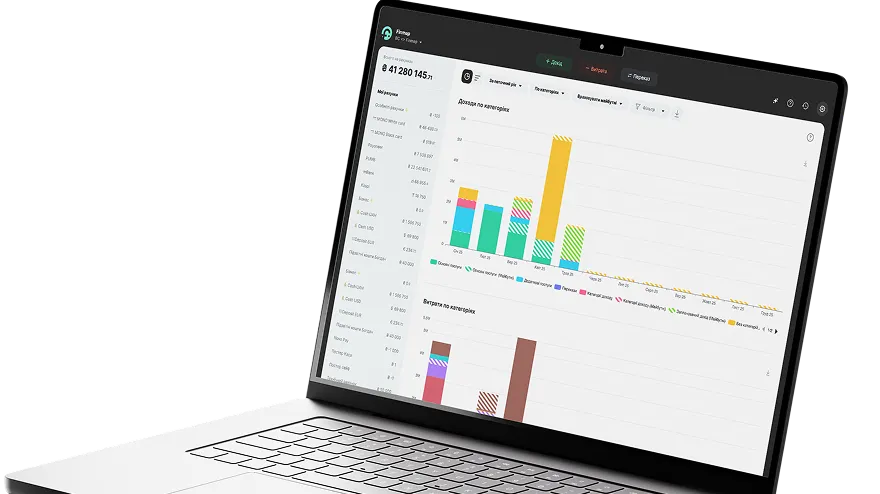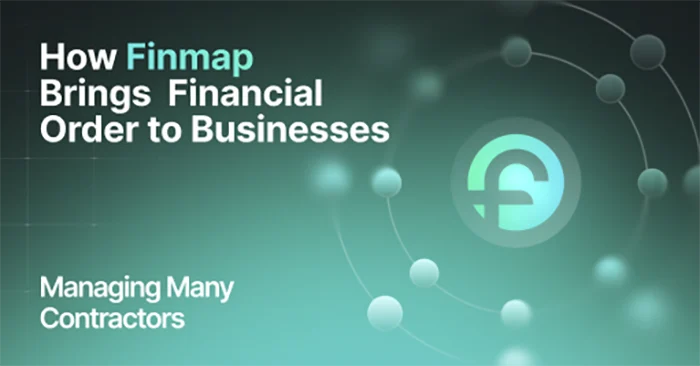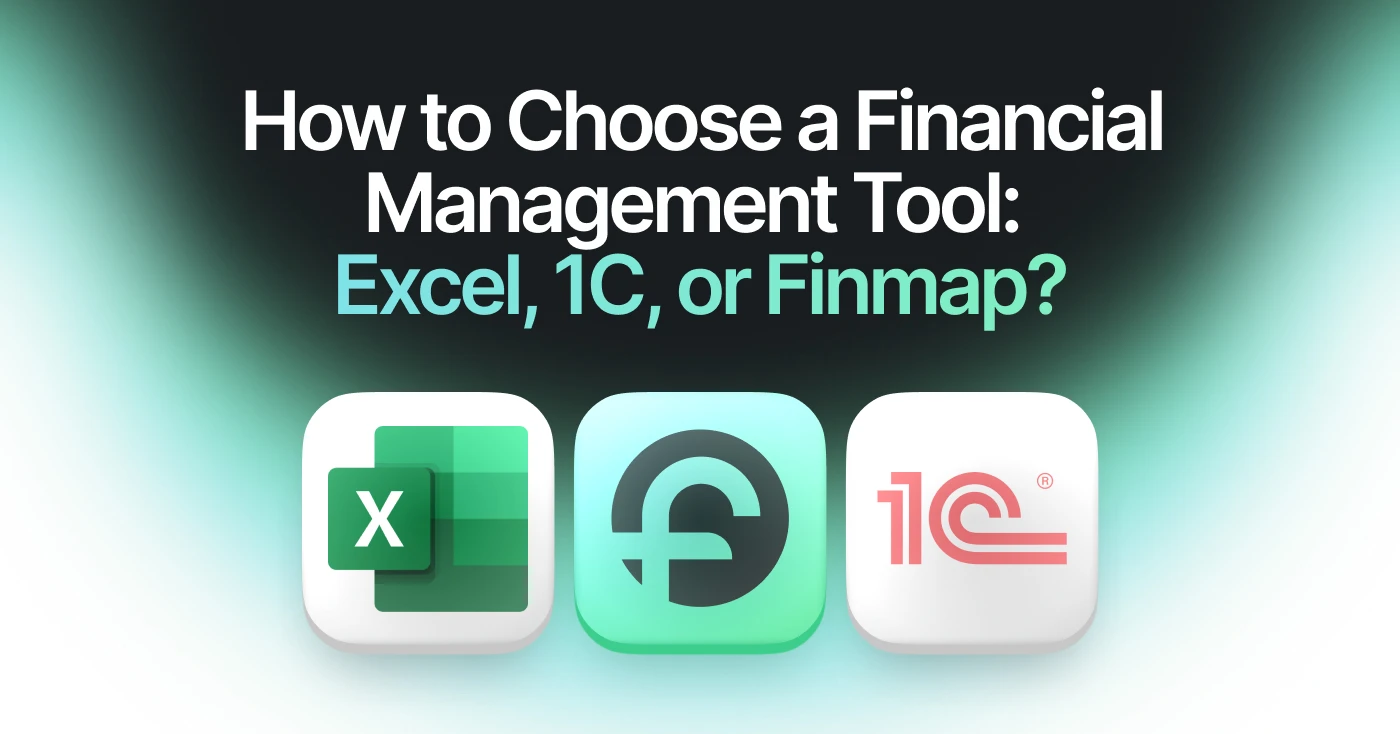Launch with $100K — Zero on the Account: The Harsh Truth About Info Business and a Plan to Save It
You can run launches for $10,000, $50,000, even $100,000 — and still end up with no money.
On paper — success; in real life — a negative balance and constant stress. If sales stopped tomorrow, how many days could you last without panic?
When the war started, I realized that we were bankrupt. We had turnover, but no money for financial management. — Oleksandr Horevych, producer of educational products and online schools, guest of the podcast “I Wish I Knew This Earlier.”
This is not an isolated screw-up — it’s the typical scenario for most info-businesses that don’t manage their finances because “there’s no time for managerial accounting.”
The problem isn’t that you earn too little. The problem is that you don’t manage the money you’ve already earned.
This isn’t about a crisis. It’s about self-deception. About how founders build businesses based on emotions, not numbers. And how a “successful launch” can hide a hole worth hundreds of thousands of hryvnias.
This article is a cold shower for those who still believe that finances can be “outsourced” and that all you need to do is “sell more.”
After reading, you will learn:
- Why “earned” does not equal “having money” — and how to avoid the cash flow trap.
- How to see your money in advance: accounts receivable, payment schedules, real balance, and obligations.
- How to create a financial system where every hryvnia has a date, a purpose, and a responsible person.
- 5 KPIs for the financial viability of a business.
- How to stop “living by feelings” and start managing finances like a founder.
There won’t be any sweet stories about “easy money” here. There will be the truth, which will make many feel uncomfortable. After reading this, you will never be able to look at your finances the same way again.
Insight 1. Finances — the direct responsibility of the founder
You can delegate advertising, content, and even sales. But when you hand over financial decisions to informal executors and remove yourself from the financial loop, you create operational blindness and lose control over liquidity in real time. Turnover may grow, but there’s no money — and you only find out after the fact.
This was the biggest mistake of my life — not getting involved in finances. — Oleksandr Horevych, entrepreneur, strategist, and online product producer
What exactly should a founder do
Red flags indicating: “you are not managing your money”
How to Take Control of Finances Today
- Summarize the day. Open your account summary: how much money is available right now and on which accounts.
- Record all accounts receivable. For each client: amount → date → payment channel. This is your cash-in forecast.
- Mark obligations. Taxes, acquiring fees, salaries, platforms, rents/contractors, possible refunds — each as separate lines in your payment calendar.
- Check the balance afterward. On key dates of the week, verify you’re not going negative after planned movements.
- Enable a weekly ritual. Once a week — a short review: balance → accounts receivable → calendar → P&L. Any significant decision — only after this.
At the small business stage, you are the chief financial officer. Until balances, accounts receivable, payment calendar, and P&L pass through your hands, any “successful launch” can end with an empty account — and you’ll find out too late.
Do you want it to work not on you, but for you?
Start with a free diagnosis with a Finmap expert and get an implementation plan: what to connect, what to automate, and which money rules to set so that every launch converts not into stress, but into transparent profit.
Insight 2. Revenue ≠ Profit: Why $10,000 in the account is not yet free capital
You count the money that came into the account — and feel in the black. But these funds are already allocated for: taxes, fees, team, platforms, advertising, and possible refunds. The mistake is treating turnover as profit and spending advances as if they were free cash.
I made $10,000 in sales. That doesn’t mean I have $10,000 in my pocket. — Oleksandr Horevych, entrepreneur, strategist, and online product producer
What this means in practice
Red Flags and Effective Solutions
How to Separate Turnover and Profit Today
- Trace the money backwards. For each payment, record which expenses and obligations are tied to it.
- Divide revenue into three buckets: “Taxes/Fees,” “Obligations,” and “Profit.” The “Profit” bucket is filled last.
- Set up a payment calendar. For each date: what comes in/goes out and what the balance will be afterward.
- Weekly P&L ritual. In the report, separate: turnover → expenses → net profit; track trends, not just one-off numbers.
- Don’t spend advances. Until obligations are fulfilled and the risk of refunds has passed, this is not money “in hand.”
Your business doesn’t go bankrupt because of “low turnover” — it sinks when advances are spent as profit. Separate the concepts of revenue and profit, reserve obligations in advance, and make decisions only after reviewing the P&L and payment calendar.
Insight 3. Accounts Receivable as a Driver of Predictable Business Liquidity
You can have a full cash balance today and go negative on Friday — simply because you don’t know exactly when and from whom the money will arrive. Without a calendar of upcoming inflows, you rely on assumptions rather than data.
If we simplify it a lot, it’s the money your clients, students, or pupils still owe you. — Oleksandr Horevych, entrepreneur, strategist, and online product producer
What this means in practice
Red Flags and Effective Solutions
How to take accounts receivable under control today
- Get the full picture. Verify all installment agreements: amount → date → payment method for each client.
- Enter into the payment calendar. Each upcoming payment is a separate entry with the expected date.
- Mark money as “reserved.” Advances backed by obligations are untouchable until fulfilled.
- Enable reminders. 48/24 hours before the deadline — automatic notification to the client + responsible team member.
- Weekly check. Review statuses: “planned / paid / overdue” + adjust expenses according to actual inflows.
- Plan B for overdue payments. If money hasn’t arrived: freeze non-essential expenses, focus on quick collections (additional payments/upsells), update the calendar date.
Accounts receivable is not “somewhere later.” It’s your radar for future cash. When you see who / how much / when, you can plan expenses without cash gaps and stop living from launch to launch.
Insight 4. Cash gaps and refunds: how “successful sales” eat up your business
You can run loud launches and grow your revenue, but without reserves, a payment calendar, and clear refund rules, it’s easy to face a cash gap on refund days or mandatory payments. The main reason for failures in info-business is spending advance payments as “free” money and lacking control over financial obligations.
The biggest problem you can get into is, of course, a cash gap. Spending the money as soon as it comes in. — Oleksandr Horevych, entrepreneur, strategist, and online product producer
What this means in practice
Red flags and effective solutions
How to prevent cash gaps today
- Divide money into three buckets: "obligations", "taxes/fees/salaries", "profit". Only what remains after fulfilling obligations goes into the profit bucket.
- Set up a payment calendar. For each date: expected inflows, mandatory payments, projected balance afterwards.
- Create a refund reserve. A fixed % of revenue from each launch — separate from operational cash.
- Weekly P&L ritual. Check that you’re not funding today’s expenses with tomorrow’s inflows.
- Freeze “wants”. Any upgrade/experiment — only after obligations and reserves are covered.
- Refund scenario. If refunds increase: stop non-essential expenses → focus on quick top-ups/upsells → review refund policies in future offers.
A cash gap appears not because you sell too little, but because you spend advances as profit and don’t plan money by dates. Reserve obligations, maintain a calendar and P&L — and “successful sales” will stop destroying your cash flow.
Insight 5. Founder’s financial literacy — transparent data instead of intuition
You can be a launch genius, but without a clear picture of your money, every decision is a gamble: invest $500 or $5,000 in advertising, sign a contractor or wait? When you don’t see balances, accounts receivable, and the payment calendar, you operate on emotions, not business.
I don’t know how much money I will have, if I’ll have it at all. I feel very unsafe. — Oleksandr Horevych, entrepreneur, strategist, and online product producer
What this means in practice
Red flags and effective solutions
How to enable financial predictability today
- Take inventory of your money. Consolidate all accounts in one view: how much and where the money is “sitting” right now.
- Digitize your accounts receivable. For each client: amount → date → status (“planned / paid / overdue”).
- Set up a payment calendar. For each day of the week — inflows/outflows and projected balance after.
- Start a weekly P&L ritual. Check: revenue → expenses → net profit; note the reasons for deviations.
- Measure efficiency, not just activity. For each initiative, calculate ROI for every dollar and overall profitability for the period.
- Reserve obligations. Advances tied to work/event are untouchable until fulfilled and “past the refund window.”
- Big-spending rule. Any “development” expense happens only after reviewing balances, accounts receivable, and P&L.
Financial literacy is not bookkeeping; it’s your ability to see money ahead and make decisions based on numbers. When you have balances, accounts receivable, a payment calendar, P&L, ROI, and profitability at your fingertips, you are truly managing your business.
Insight 6. Pre-launch financial model: expenses, break-even, and scenario planning
You can start a product flow “by intuition” and hope that sales will cover everything. But without a calculated model, you either spend advances or go negative on the day of mandatory payments. A business plan isn’t a presentation for investors—it’s your shield against cash gaps.
So, when I launch a product flow, I already understand the business model in advance, even before the launch. — Oleksandr Horevych, entrepreneur, strategist, and online product producer
What this means in practice
Red flags and effective solutions
How to build a working model today
- Set your sales goal: price × target number of participants.
- Break down costs: separately fixed (rent, fixed contractors) and variable (increase with group size).
- Calculate break-even: how many sales are needed to cover fixed costs.
- Enter obligation dates into the payment calendar and reserve funds for each date.
- Create three scenarios: optimistic / base / stress + predefined steps (cut costs, upsells, defer expenses).
- Before major expenses, check: are obligations covered and will this payment affect the “balance after” on key dates?
The model and break-even are calculated before the launch. Separate costs, maintain the obligations calendar, and keep scenarios — this is how you start controlling your cash.
Insight 7. Make your business run without you
You can carry everything yourself, but until the system holds the business, you have no peace: a hospital visit, vacation, or a week offline — and everything falls apart.
When the business is systemic, you can at least be sure that if you drop out, get sick, are gone for a week, or go on vacation, nothing will break. The company won’t close or go bankrupt. When it’s non-systemic, everything usually rests on the founder. — Oleksandr Horevych, entrepreneur, strategist, and online product producer
What this means in practice
Red flags and effective solutions
How to turn on systematization today
- Identify your profile. Are you more creative or systematic? If creative — hire an operations/project manager; if systematic — add a creative partner/role for growth.
- Create a unified financial dashboard. Balances, receivables by dates/clients, payment calendar with “remaining after”, P&L — accessible to key people.
- Define roles and limits. Who approves expenses up to $200/500/1000+; who initiates payments; who controls receivables and reminders.
- Launch a weekly “radar route”. 30–45 min: balances → receivables/overdue → payment calendar → P&L → weekly decisions.
- Create 3 short SOPs. (a) refunds, (b) purchases/contracts, (c) reserve for obligations — with clear steps and deadlines.
- 7-day absence test. Simulate absence: do payments go through? Are receivable reminders sent? Are scheduled payments made? Record what fails — and fix gaps.
- Number culture. Before any major decision, the team opens the dashboard and answers: how will this affect balances, receivables, calendar, P&L?
A systematic business is not about complexity, but predictability. When there are defined roles, limits, rituals, and a shared dashboard with balances, receivables, a payment calendar, and P&L, the company won’t break if you disappear for a week — and this is the best insurance against bankruptcy.
Overall conclusion
This story is not about “bad luck.” It’s about the founder’s choice: either you manage the money, or the money manages you. This is how “successful launches” lead to empty accounts, cash gaps, and a sense of danger when you don’t know if money will come tomorrow.
The key mistake, honestly admitted by the hero, is “not getting involved in finances.” The conclusion is simple and harsh: as long as the business is small, you are the main financial director.
To break free from the illusion that “revenue = profit,” return to the basics:
- Separate the concepts: revenue — expenses — obligations — net profit. Advances are not “free money” until obligations are fulfilled and the refund window has passed.
- See future money in advance: receivables for each client with dates are your cash-in forecast, which guides expense planning.
- Live by the payment calendar: for each date, track what comes in/what goes out and what the remaining balance will be. This is how “random” cash gaps are prevented.
- Maintain a weekly P&L ritual: revenue → expenses → net profit. Not numbers for the sake of numbers, but decisions based on efficiency trends.
- Have a pre-launch model: fixed/variable costs, break-even, obligations calendar, and refund reserve — all before the first payment arrives.
- Foster a numbers-driven culture in the team: roles, limits, simple SOPs for advances, refunds, and purchases. Decisions “based on intuition” are replaced by data-driven decisions.
Five metrics that should always be in view: revenue, expenses, net profit, ROI per dollar, and profitability. They show whether the business is truly alive or just “making noise” with sales.
The final message is pragmatic: a founder’s peace of mind is bought with transparency. When you have balances, receivables, a payment calendar, and P&L all in one field of view, you stop chasing “hopes for the next launch” and start managing money as a system.
Then any pause — sickness, vacation, force majeure — won’t break the company. Success stops being a one-time spike and becomes predictable profitability.
Here’s a simple action for today: consolidate all accounts, digitize receivables, set up a payment calendar, and start a weekly P&L review. Everything else follows. When you look ahead at money and make decisions based on numbers, your infobusiness stops being a roulette and turns into a controlled mechanism that generates not just revenue, but profit.
Frequently Asked Questions
1. I have good revenue. Why is there still not enough money?
You are confusing revenue with profit. What has “come in” is already allocated for taxes, commissions, salaries, platforms, advertising costs, and possible refunds. Until these obligations are fulfilled, it is not free money. Solution: check the P&L, not just incoming cash; reserve funds for obligations until they are completed.
2. How do I practically manage receivables to see money ahead?
Record for each client: amount → date → payment method. In the payment calendar, create “future incoming payments” and set reminders 48/24 hours before the deadline. Statuses: “planned / paid / overdue.” Any expenses should be approved only after verifying that the required amount will arrive on the required date.
3. What to do so that refunds or taxes do not create cash gaps ?
- Divide money into three categories: obligations, taxes/commissions/salaries, profit (last).
- Keep a refund reserve (a fixed portion from each launch).
- Maintain a payment calendar with a “remaining balance after” for key dates.
- Any “wants” should be funded only after obligations and the reserve are covered.
4. Which 5 metrics should be monitored weekly and what do they mean?
5. Who should manage finances at the start, and how to bring order?
At the early stage of your business — you should.It means direct control over balances, receivables, the payment calendar, and P&L.You can delegate routine tasks, but all money-related decisions and approvals for major payments must go through you.Hold a weekly ritual: balance → receivables/overdues → payment calendar (“balance after”) → P&L → only then major expenses/investments.




.webp)


.webp)

